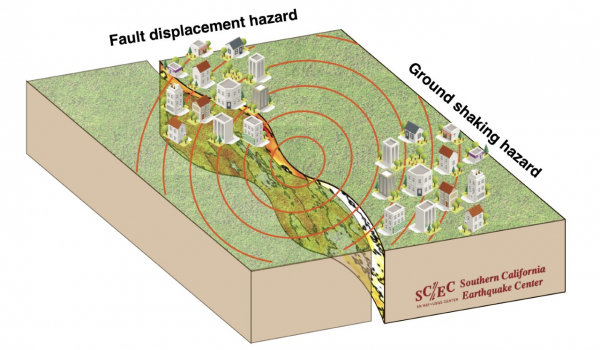Roles of Dynamic Rupture Simulations in the Development of Next Generation Probabilistic Fault Displacement Hazard Analysis (PFDHA) Models
Yongfei Wang
SCEC

- Date & Time
- Location
- Online-only seminar via Microsoft Teams
- Host
- Evan Hirakawa
- Summary
Coseismic fault displacements in large earthquakes have caused significant damage to structures and lifelines located on or near fault lines. For buildings or distributed infrastructure systems located near active faults, engineering displacement demands are defined using probabilistic fault-displacement hazard analysis (PFDHA) models. However, fault displacement models (FDMs) used in PFDHA are sparse and poorly constrained in part due to the scarcity of direct observations. The physics-based dynamic rupture simulation method is an attractive alternative to address this important issue. Because fault displacements can be simulated for various geologic conditions as constrained by current knowledge of earthquake processes, they can be used alone or combined with empirical datasets to support FDM and thereafter PFDHA model development.
Simulations must first be validated against data, then the underlying physics can justify their extrapolation to other plausible events. This study summarizes our calibrated dynamic rupture models and their validation against displacement observations from empirical scaling relationships for strike-slip earthquakes from M5 to M8. This combination of calibration and validation of the model is critical in informing the functional forms used in the FDMs. We also perform a first-order validation of the near-fault ground motion to confirm that essential modeling physical factors important to ground motions are also properly addressed. This work is an essential first step in paving the way for dynamic rupture modeling to support PFDHA development.
Closed captions are typically available a few days after the seminar. To turn them on, press the ‘CC’ button on the video player. For older seminars that don’t have closed captions, please email us, and we will do our best to accommodate your request.
 Jump to Navigation
Jump to Navigation